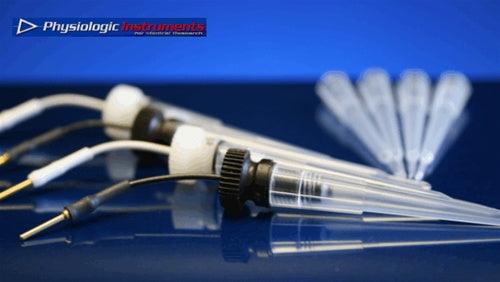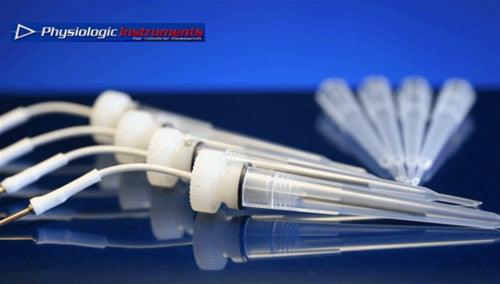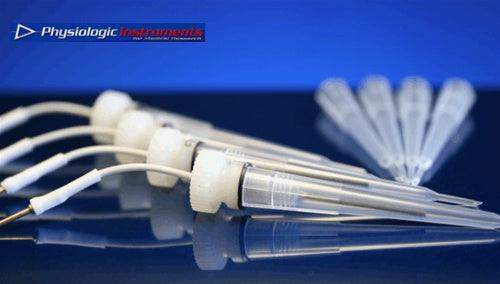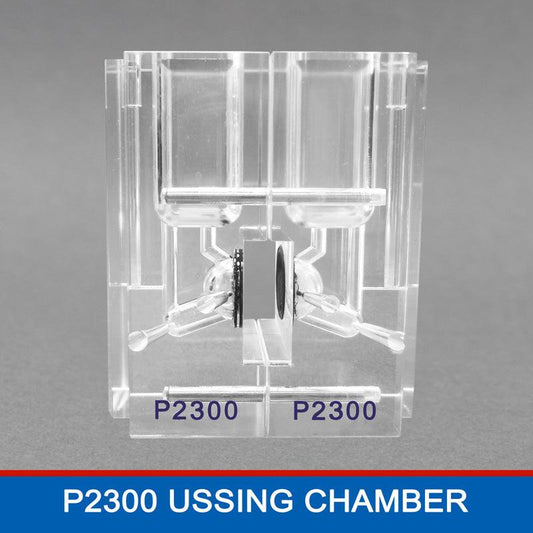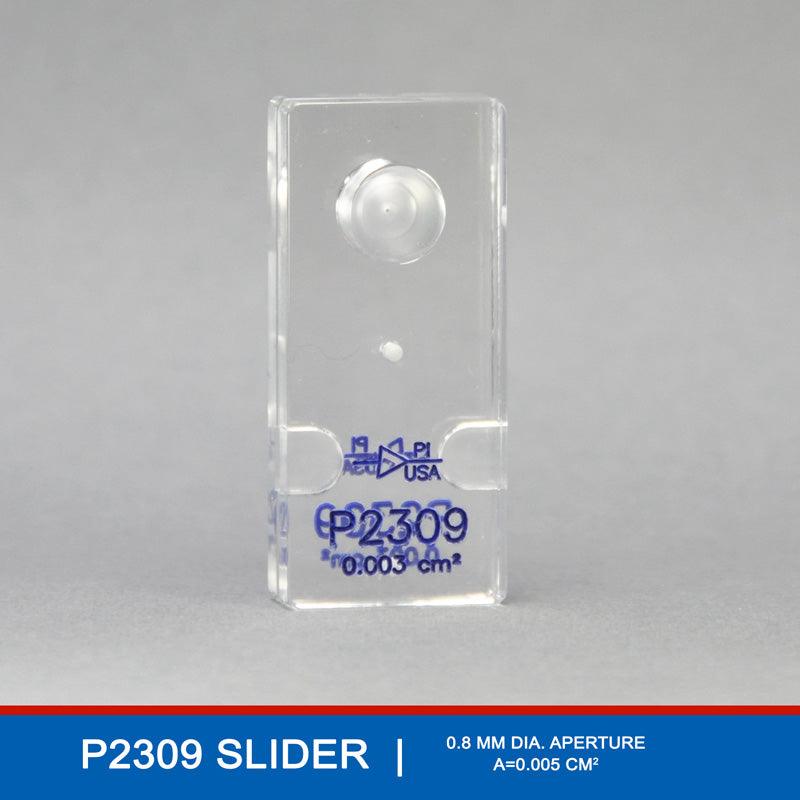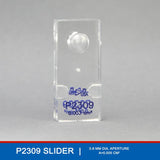P2309 EasyMount Ussing Chamber Slider
The P2309 EasyMount Ussing Chamber Slider is a 4.0 mm diameter tissue holder for the P2300 Ussing Chamber System, designed with a 0.126 cm² round aperture and equipped with mounting pins to secure tissues like mouse intestine and bladder. Its pin-supported design stabilizes samples, reducing movement and ensuring integrity during experiments, which is especially beneficial for thicker or flexible tissues.
This configuration provides a controlled environment for precise studies of ion transport, permeability, and barrier function, making the P2309 a valuable tool for physiological research on epithelial tissues.
⦿ To be used with P2300 EasyMount Ussing Chambers- Regular price
- $218.00
- Regular price
-
- Sale price
- $218.00
- Unit price
- per
EasyMount Slider Details

P2309 EasyMount Ussing Chamber Slider for Round Aperture with Mounting Pins
APETURE SIZE: 4.0MM Circular | Area = 0.126 cm2
The P2309 EasyMount Ussing chamber slider is a robust tissue holder designed for use with the P2300 Ussing Chamber System, tailored for experiments involving tissues like mouse intestine or bladder. Featuring a 4.0 mm diameter circular aperture with an area of 0.126 cm², this slider provides a sufficiently broad exposure to accommodate medium-sized tissue sections, making it ideal for experiments where detailed observation of transport and barrier properties across a defined tissue area is required.
The P2309 includes mounting pins, which ensure the secure placement of tissues, reducing movement and maintaining sample integrity throughout the experiment. This pin-supported design is particularly advantageous for thicker or more flexible tissues, which benefit from extra stabilization to minimize artifacts. When combined with the P2300 Ussing Chamber, the P2309 Slider offers a precise, reliable platform for high-quality data collection, essential for physiological studies examining ion transport, tissue permeability, and pharmacological responses in epithelial tissues.
Instructions on the P2309 Ussing Chamber Slider
To use the P2309 EasyMount Slider in an experiment with mouse intestine in the P2300 Ussing Chamber System, follow these steps for optimal tissue handling and accurate data collection:
1. Tissue Preparation
- Carefully dissect a section of mouse intestine, ensuring it is large enough to cover the 4.0 mm aperture of the P2309 Slider (area: 0.126 cm²). Keep the tissue in a physiological solution to maintain its viability and integrity until mounting.
2. Mounting the Tissue on the P2309 Slider
- Place the section of mouse intestine over the circular aperture of the P2309 Slider. Use the integrated mounting pins to secure the tissue in place, which is especially helpful for thicker or more pliable tissues like intestine. Ensure that the tissue is stretched flat and covers the aperture completely to prevent any gaps that might affect data accuracy.
3. Inserting the Slider into the P2300 Ussing Chamber
- Insert the mounted P2309 Ussing Chamber Slider into the P2300 Ussing Chamber, which should be pre-filled with appropriate solutions on either side to replicate the luminal (inside) and basolateral (outside) environments of the intestine. The Ussing Chamber system will then separate the two sides of the tissue, allowing precise control over experimental conditions on each side.
4. Conducting the Experiment
- Connect the electrodes to measure the transepithelial potential difference, ion current, or other transport properties across the tissue. The 0.126 cm² exposure area provides a balance between focused measurements and adequate sample coverage, making it ideal for studies requiring high-resolution data on ion transport, permeability, or tissue response to experimental compounds or conditions.
5. Data Collection and Analysis
- Throughout the experiment, maintain stable environmental conditions with the P2300’s temperature and aeration controls as needed. The secure tissue positioning enabled by the P2309 slider ensures consistent and reliable measurements, minimizing movement or artifacts, which is essential for collecting reproducible data. Analyze the collected data on ion flow, barrier function, or permeability, depending on the specific experimental aims.
Using the P2309 Ussing Chamber Slider in this way provides a stable and reliable setup for in-depth studies on the epithelial transport properties of mouse intestine, essential for understanding barrier function, ion exchange, and pharmacological effects in small animal models. If you need any assistance, please contact us.


